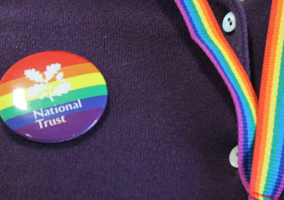Alex McDowell says it's wrong to think of legacy fundraisers as being preoccupied with death.
As a legacy fundraiser, I’ve lost count of the times friends ‘joke’ about how I must hope for a cold snap or flu epidemic.
Is that how they see me: a death eater, with no elderly friends or relatives? A ghoul who gets excited by the prospect of a winter cold-snap, or delays in the development of the latest flu vaccine?
While there may be little to excuse the insensitivity of such comments, ignorance of how legacy fundraising and legacy administration works does at least provide some form of defence when the comments are made by those who don't work in the voluntary sector.
However this holds much less sway when sector colleagues’ comments or questions suggest they too perceive there to be a direct correlation between death rates and legacy income in the same time period.
My heart therefore sunk a little when I saw the recent sector press headlines that stated: ‘Legacy income fell in the last year, despite increasing rate of deaths’.
My despondency was not the result of concern about legacy giving trends. Nor indeed was it due to the quality or content of the article itself. It was instead the emergence of yet another incorrect link being made between annual legacy income and the corresponding death rate in the same period.
Surely there is some link between deaths and short-term legacy income?
On face value, conflating annual legacy income and death rates is understandable. If the proportion of wills that contain a legacy gift remains constant, more deaths would result in more legacy gifts and therefore more income.
Unfortunately, this logic overlooks three key factors that affect the relationship between death rates and legacy income: Administration time, average gift values and individual charity variances.
In terms of administration time, the overwhelming majority of legacy income comes from residuary gifts. That is the type of legacy in which the gift represents a share of the donor’s estate after all liabilities and specific bequests have been accounted for.
The average time between a death and the charity receiving the final payment from a residuary gift is typically around two years.
This means an increased death rate in ‘year one’ wouldn’t necessarily have a significant impact on total legacy income until years two or three.
Residuary gift values are also significantly affected by macroeconomic factors such as property and stock market values.
As a result, it is entirely possible that more deaths could result in more gifts yet there still be a drop in overall legacy income (and vice versa).
A more helpful snapshot for assessing legacy giving trends is the proportion of estates that include a legacy gift. Where possible, measuring actual will writing behaviour can also provide a helpful indicator of legacy fundraising activity.
Also, the logic that an increase in the death rate will equate to more legacy income for any individual charity assumes overall levels of giving remain static over time.
Even if this condition is met, there is still no guarantee an individual charity’s ‘market share’ or average gift values will follow the same trajectory as the wider sector.
For an individual charity, a review of the number of open legacy cases, their estimated value and likely completion dates will be a more useful guide to short-term legacy income than analysis of death rates.
Why does any of this matter?
Yes, in a word. Aside from the fact it’s inaccurate to conflate death rates and legacy income in the same time period, a bigger concern for all legacy fundraisers is that such stories and generalisations reinforce perceptions that our part of the sector is preoccupied with death.
In Fundraising Magazine
This can lead then to a vicious cycle, fuelling fears in the public that legacy giving is a subject best avoided or left to others. This in turn, can be a barrier to people feeling comfortable starting legacy conversations; despite the fact a legacy gift, just like any other form of donation, can only be made to a charity by the living.
Ultimately, it may mean fewer supporters being asked to consider giving through their will. This would be a bad outcome for donors and it could limit charities ability to deliver the positive impact their supporters wish for.
So let’s make it easier to talk about legacy gifts. Let’s encourage more legacy conversations that focus on the things that matter most to donors and let’s lessen fear of the subject by having fewer legacy income discussions that lead with a reference to the death rate.
Alex McDowell is Head of Community, Legacy and Challenge Events at RNIB and chair of Remember a Charity.
Related Articles











